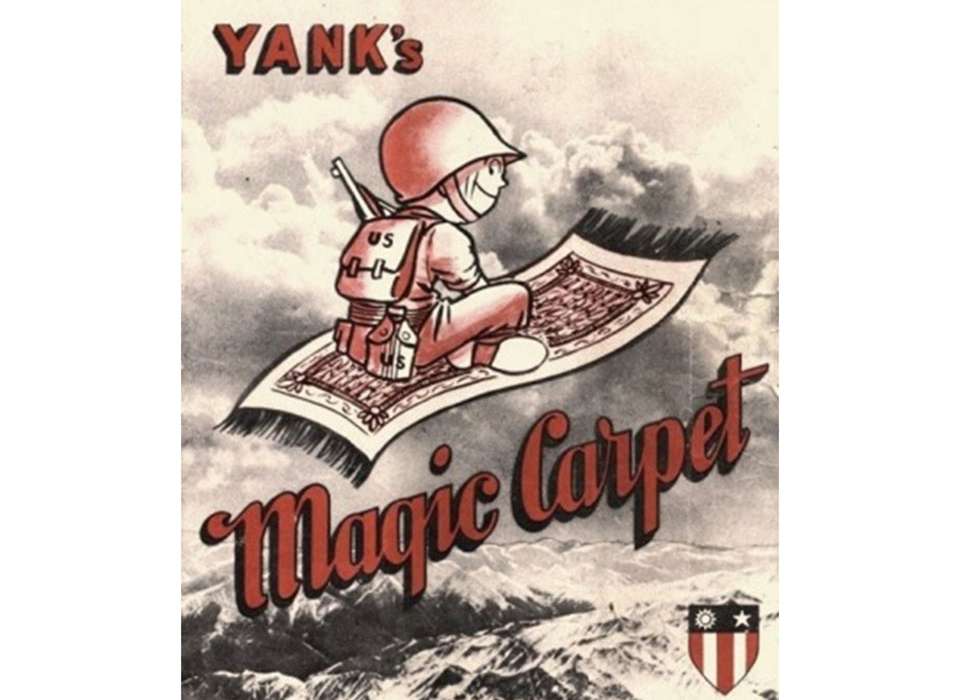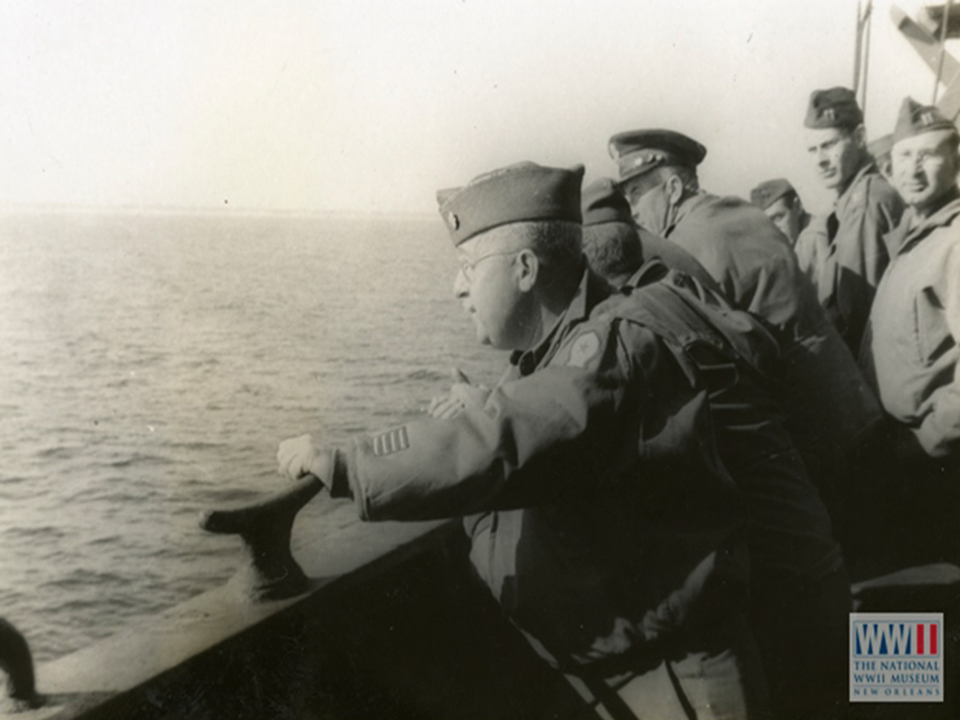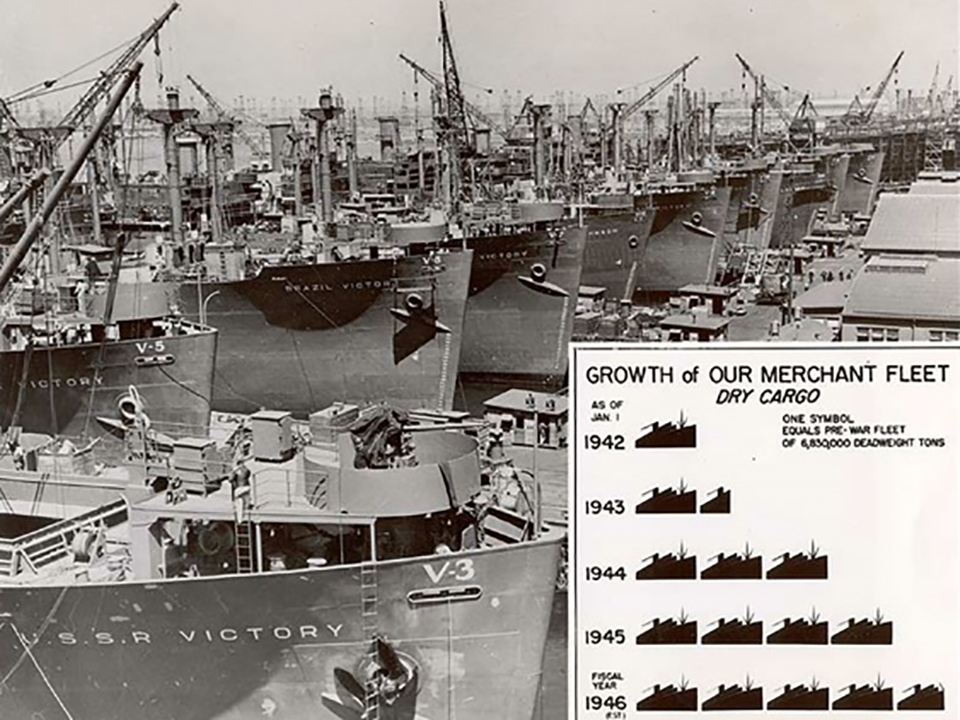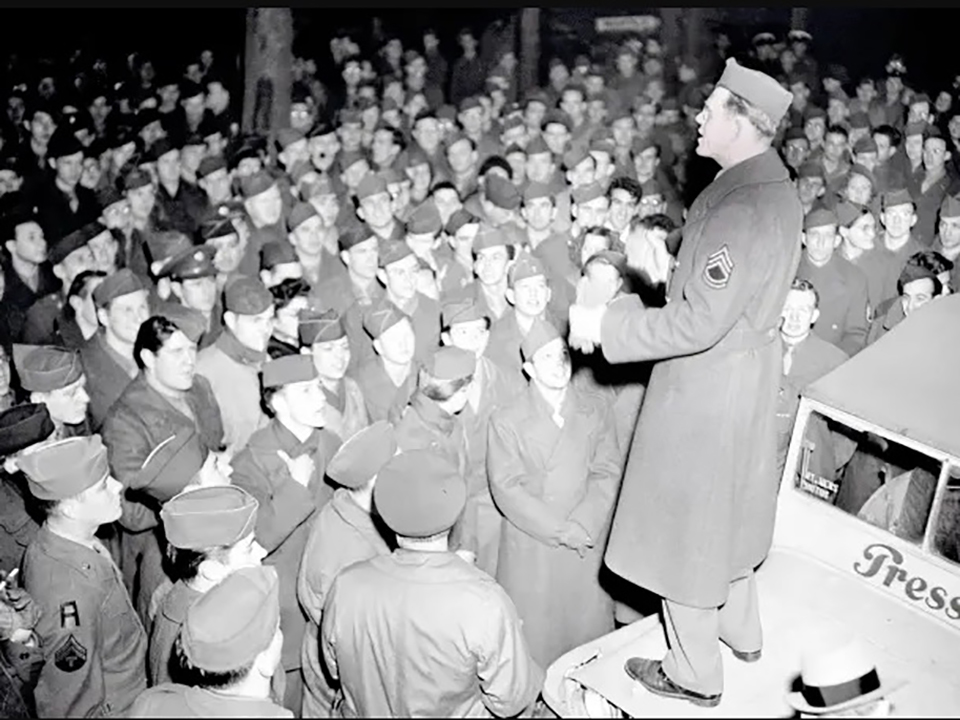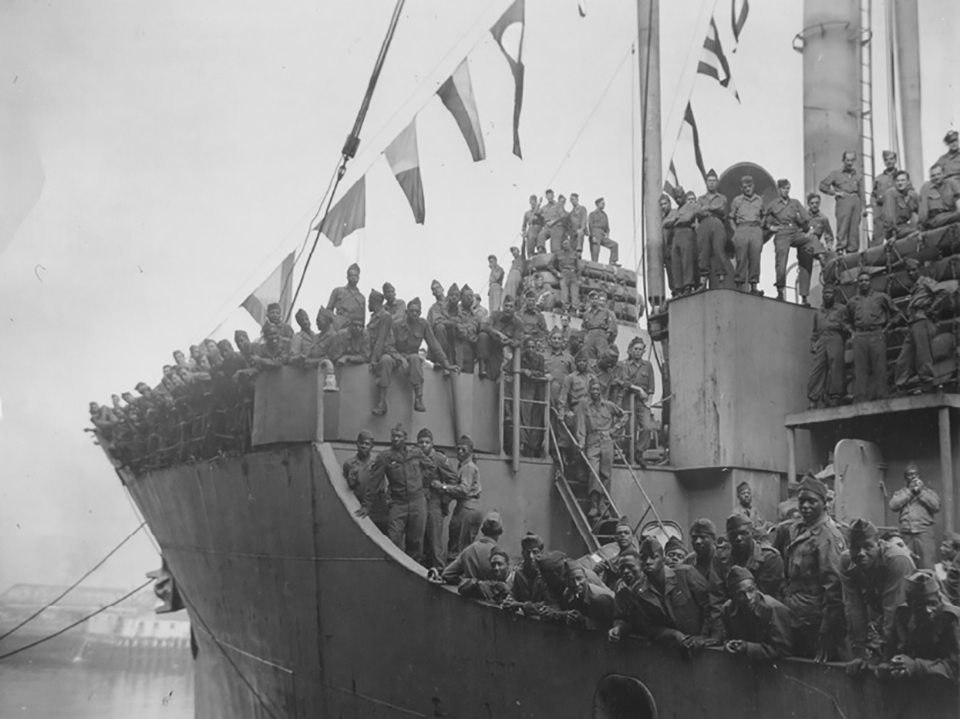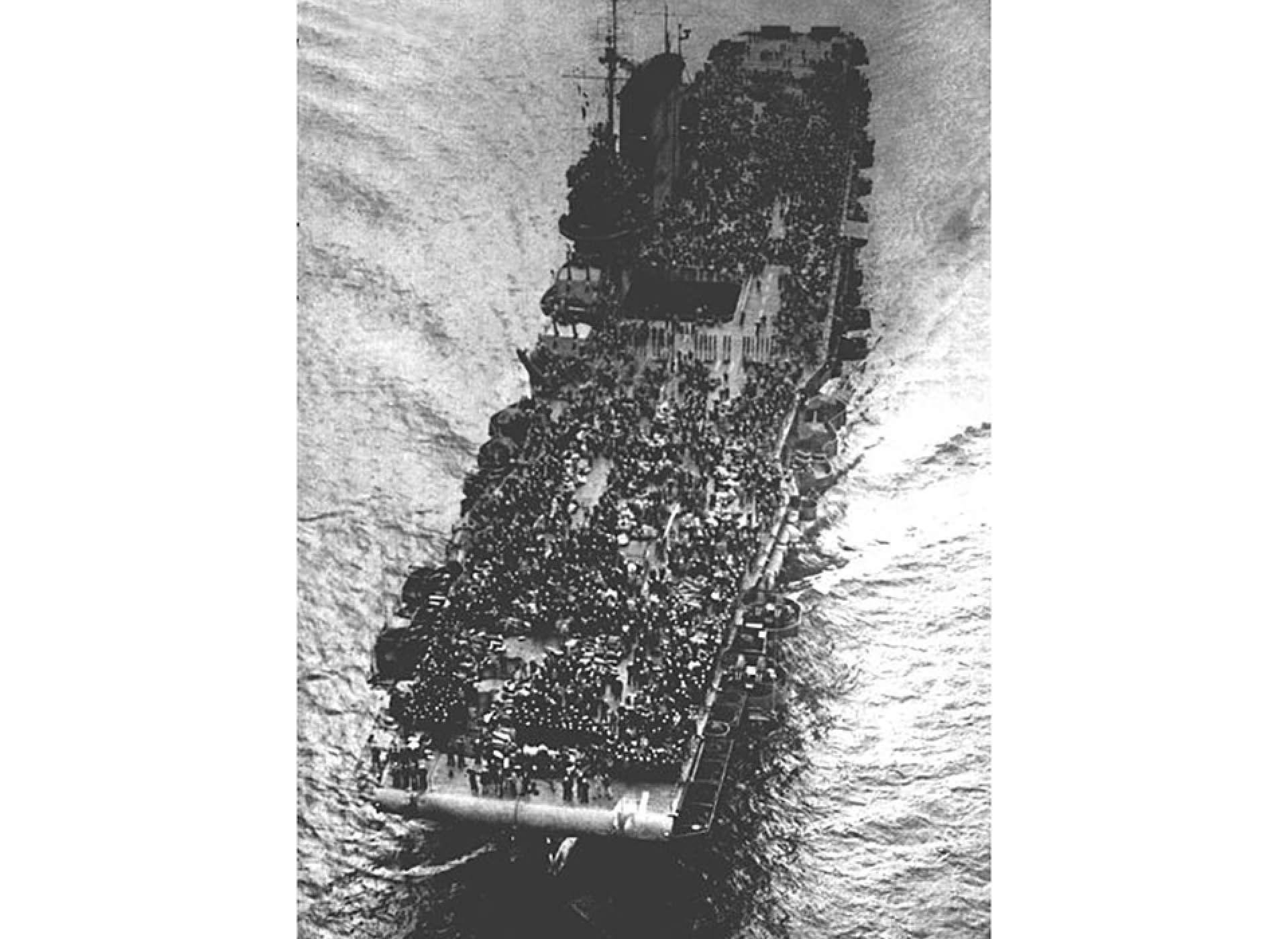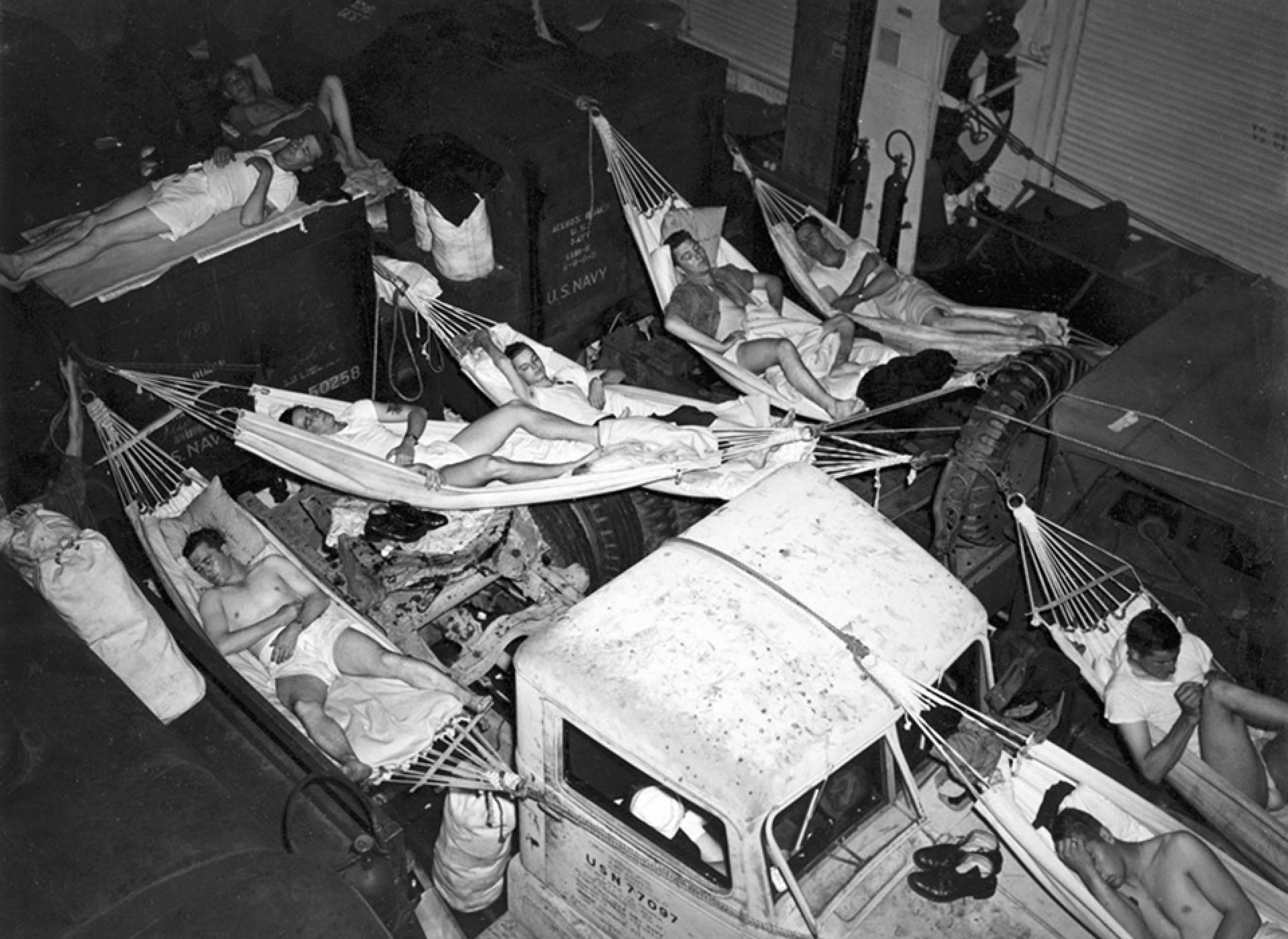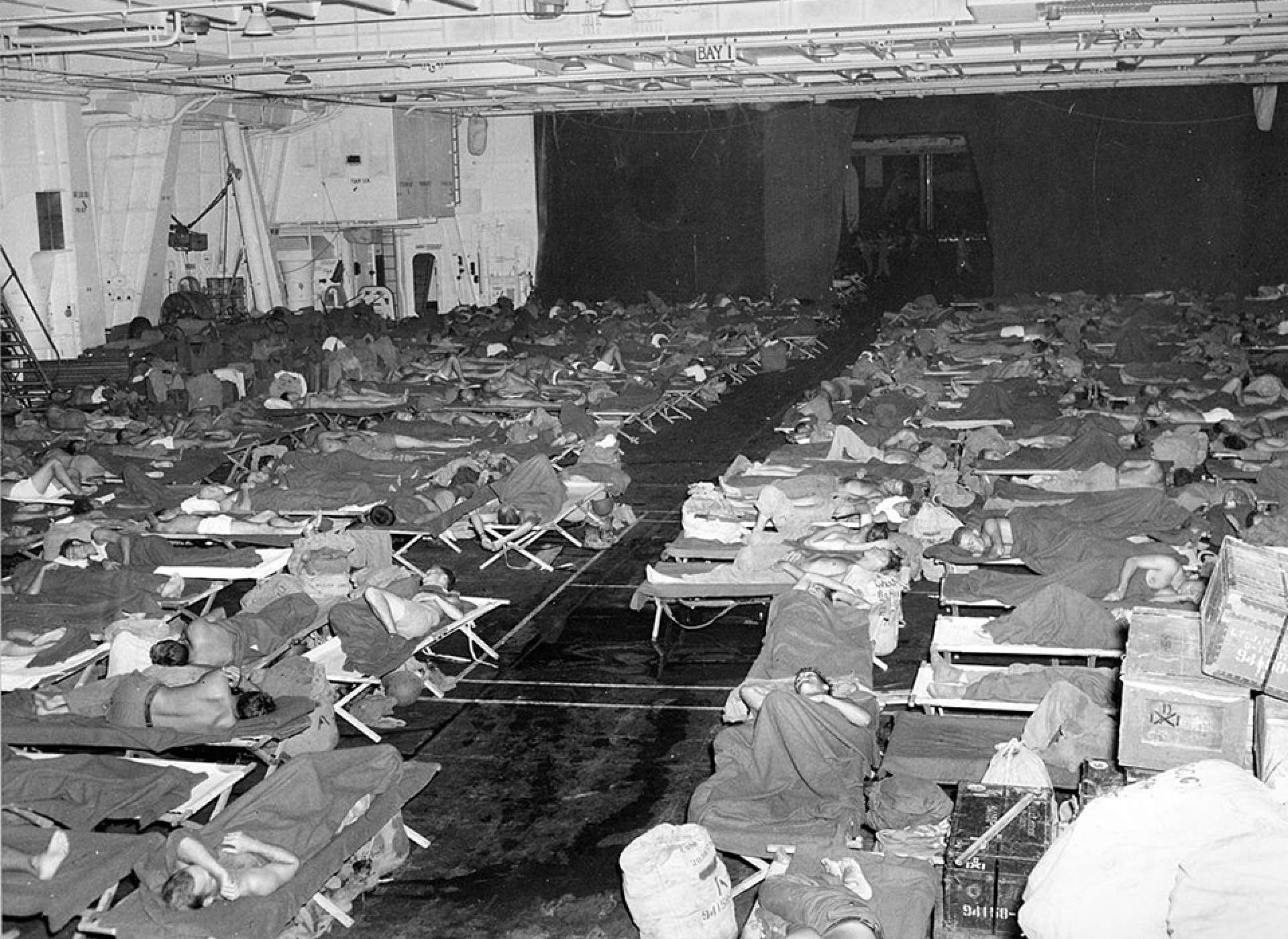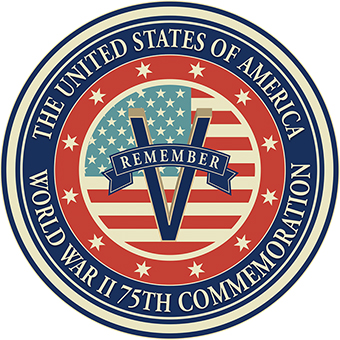Top Image: Yank's Magic Carpet, A souvenir booklet specially prepared for US Army personnel in China, Burma, and India. Pre-censored for mailing.
Separated by vast distances, theater, branch of service, sex, race, and rank, the journey back to the Home Front (United States) at the conclusion of World War II was one of only a handful of incidences universal to nearly all American servicemen who fought and survived the bloodiest conflict in human history. That it was a global experience shared by millions makes it remarkable enough on its own.
However, it is when the sheer volume of Americans returned are considered—eight million men and women from every service branch, scattered across 55 theaters of war spanning four continents—that one can make the case that Operation Magic Carpet stands as one of the greatest achievements of the entire war. Though lasting only 360 days, Operation Magic Carpet was the largest combined air and sealift ever organized.
Operation Magic Carpet officially commenced on September 6, 1945, four days after VJ-Day ; ending on September 1, 1946. Though on some days and months, particularly December 1945, the return rate was much higher. On average Operation Magic Carpet transported 22,222 Americans home every day for nearly one year straight. The sum total of which provides the mathematical framework behind the beginning of the post-war Baby Boom nine months later.
Doctors returning to the United States in the Mediterranean or Atlantic circa October 1945, The National WWII Museum, Gift of Ms. Dorothy Poitevent, 2007.243.295.
Even though ships, supplies, personnel, and planning from all branches of the military would be needed to execute Magic Carpet successfully, at the head of its organizational development was the War Shipping Administration or WSA. Established by President Roosevelt in February 1942, to deal with the shortage of civilian shipping tonnage available for use by the US military, the WSA, to quote the Executive Order which authorized its creation, was to 'control the operation, purchase, charter, requisition, and use of all ocean vessels under the flag or control of the United States' as well as 'allocate vessels under the flag or control of the United States for use by the Army, Navy, other Federal departments and agencies, and the Governments of the United Nations.'
That is, the WSA and its attendant organization, the US Maritime Commission, which were coincidentally headed by the same man, Admiral Emory Land, would tell the Army or Navy which Liberty or Victory ships, transports, and/or civilian craft were to be earmarked for their usage. If World War II was a game of Monopoly, the WSA was the bank.
As early as mid-1943, even though Germany and Japan had yet to be defeated, US Army Chief of Staff George Marshall recognized that once victory in any theater was secured, redeployment and demobilization could and would present a major obstacle if preliminary planning was not begun. Following D-Day, when it was predicted that the war in Europe would end within six months, Marshall and his team had more questions than answers.
Where would troop collection assembly points and processing centers be set up in Europe? What American ports and rail networks were large enough and available to support the influx of returning troops that could then swisk American soldiers inland to separation centers and back to civilian life? And whose ships would be used to bring the boys back home?
As part of the pre-Magic Carpet plan, the WSA, in control with its vast armada of cargo carriers, the Army and its wartime fleet of troopships, and the Coast Guard with its force of assault troopships, would be the primary vehicles available to transport American servicemen back home to ports on the East Coast once Germany was defeated.
Noticeably absent from this nascent plan was the US Navy who, faced with the task of preparing for the likely invasion of the Japanese Home Islands, was unwilling to relinquish any of their force of attack transports and warships for transportation roles. So until Japan was defeated, the process of ferrying GI’s westward home would be the sole responsibility of the Army, Coast Guard, and the Merchant Marine.
Growth of US Merchant Fleet, 1945, The National WWII Museum, Gift of Dylan Utley, 2012.019.187.
Another question for Marshall and his planners, in addition to 'how,' was 'who.' Who gets to go home and when? By 1945, the average American serviceman and servicewoman had been overseas for 16.2 months; some much longer. Even before Japan was defeated, there was a strong public outcry to bring the boys home, with some even clamoring for a return home by Christmas with the slogan ‘Home Alive By ‘45.’
Also, adding impetus to the troops return was the Pentagon’s recognition that a gigantic and well-armed static military force without a foe to fight could quickly become an unwieldy disciplinary problem if left in the field. But obviously the United States could not snap its fingers and usher everyone back off into civilian life. So the question became who stays on for occupation duty in Europe and for how long? And, most pressingly, who is redeployed to the Pacific for the planned invasion of Japan?
Enter in the Advance Service Rating Score or ASRS; more commonly known as the Points System. Developed in mid-1944, the point system aimed at producing a systematic and equitable transition to a peacetime military structure and a much smaller military. Under the Points System, servicemen accrued credits for various actions and activities, such as months served overseas, days in combat, wounds, awards and special services, number of dependents, and marital status. In theory, the more points one collected, the quicker one would get back home.
The War Department initially projected that it would demobilize 2 million soldiers in the 12 months following the victory in Europe: 50 percent of this total were in Europe, 33 percent in the Pacific, and 17 percent had already returned to the United States after an overseas assignment. In reality, however, the Points System and points required to qualify to get back home changed and never stopped changing, being revised first in September 1944, and again in February 1945, and again in March 1945. This was due in no small part to the pushback and demands from both the Home Front and the soldiers themselves for more rapid demobilization.
Some soldiers protested their assignments as occupying forces or their planned redeployment to the Pacific. Some soldiers protested the high point score of 85 points originally required for enlisted men to qualify to return home. Soldiers garrisoned in Paris marched at night down the Champs Elysees in protest demanding to be returned home.
In the United Kingdom, 500 disgruntled American soldiers confronted a visiting Eleanor Roosevelt. In a relatively little-known incident, 4,000 American servicemen stormed the city hall of Manila in the Philippines demanding that the repatriation process be accelerated. Ultimately, it was this outcry, coupled with the unexpected surrender of Japan three months later in September 1945, that rendered the original slow demobilization plans moot and propelled Operation Magic Carpet into rapid action.
American Sgt. George Black addressing the crowd of homesick GI's as they staged a demonstration outside the US Embassy in the French capital in January, 1946. They protested the slowdown in their redeployment from Europe to the US, Courtesy of Bettmann Archive/Getty Images.
And rapid it was. On VE-Day, there were over 3 million Americans in the US Army stationed in Europe alone. By the end of 1945, less than 700,000 total soldiers remained in Army uniform around the globe. Similar figures exist for the Navy whose total force stood at 3,380,817 sailors in 1945, and less than 500,000 by the end of 1946. George Marshall quipped that Operation Magic Carpet was not a demobilization, but rather a rout.
Though homeward bound ships began leaving Europe in late June 1945, Magic Carpet did not truly become effective in moving large numbers of US personnel until after Japan surrendered. By VE-Day, the WSA miraculously had scrounged up 546 vessels to begin returning overseas troops homeward using nearly anything that could float. With the combat phase of operations completed in September of 1945, the Navy was finally able to add its tremendous fleet of vessels, including over 70 aircraft carriers, to the effort.
In total, by October 1945, there were over 700 ships of all shapes, sizes, and even nationalities involved—from pre-war tankers, ore carriers, and cargo ships to huge battleships and Italian and Panamanian craft. In Europe and in the Pacific, the type of transports available varied widely, with some European GI’s returning home in luxury aboard the gigantic British liner the Queen Mary, with the prewar First Class Dining Room converted to the enlisted mess hall, while others rode out the return journey in tiers of bunks inside the holds of some 300 converted Liberty or Victory Ships like the USNS Aiken Victory.
The Aiken Victory, a Victory ship troop transport conversion, arriving in Boston with 1,958 troops from Europe, 26 July 1945, Courtesy of Historic American Engineering Record.
Aircraft carriers were the most popular modes of transport for most returning vets, offering better entertainment opportunities—movies in the hangar decks, fresh food, hot meals, sports, swimming, ice cream—and much more spacious accommodations than could be found aboard slow moving LST’s or APD’s. Still, even the most luxurious of spaces were makeshift.
The aircraft carrier USS Saratoga in addition to its eight battle stars also brought back 29,204 veterans—the most American servicemen returned by any single US vessel. The Yorktown, Wasp, Enterprise and Intrepid all joined the convoy of returning servicemen home. Ships completed near the conclusion or immediately following the end of hostilities were altered to allow for maximum troop capacity such as the carrier Lake Champlain which was fitted with bunks for 3,300 returning troops.
-

The US Navy aircraft carrier USS Saratoga (CV-3) during her role as a troop transport in operation "Magic Carpet." By the end of her "Magic Carpet" service, Saratoga had brought home a total of 29,204 Pacific War veterans, more than any other individual ship. Courtesy of US Navy.
-

US personnel in hammocks while being transported back to the United States on board the aircraft carrier USS Intrepid (CV-11) during "Operation Magic Carpet." Courtesy of US Navy National Museum of Naval Aviation.
-

Returning veterans of the Pacific fill the hangar deck of the US Navy aircraft carrier USS Enterprise (CV-6) as it stopped in Pearl Harbor, Territory of Hawaii, preparatory to moving to the United States. Enterprise sailed to Pearl Harbor in late August 1945, returning to the States with some 1,141 servicemen due for discharge, including hospital patients and former prisoners of war. She then sailed on to New York on September 25, 1945 via the Panama Canal arriving on October 17, 1945. From November 1945 to January 1946, she transported returning servicemen from Europe. Courtesy of US Navy National Museum of Naval Aviation
There were many exceptions to the Point System in determining the order of which US personnel would be returned. US POWs in both the European, but especially the Pacific theater, were among the first Americans to be selected for return. Indeed, when the initial cease fire went into effect in the Pacific theater on August 15, the Navy immediately sent out aerial reconnaissance to locate POW camps in Japan and on the Asian mainland.
Food and supply drops to the Pacific POWs began, followed by the arrival of hospital ships, such as the USS Benevolence. Other POWs in both Europe and the Pacific unable or too injured to travel by sea, were airlifted by the personnel of the Army’s Air Transport Command or ATC and the Navy’s Naval Air Transport Service. Similarly too, Magic Carpet was not solely a one-way flow of traffic.
Over 500,000 German and Italian POWs were returned to Europe by way of the ships of the Magic Carpet system. Nor was it only just servicemen or military personnel either. Cognizant of the fact that over half a million women had wed American GIs during the four years of conflict, the WSA authorized 29 troop ships to deliver war brides to their new homes in North America.
The movement of personnel returned by Magic Carpet took place in stages. In the Pacific, not every ship made a round trip between a foreign port and the United States. Passengers were transported from various locations to collecting centers and then transported on to the United States. Thirty percent of personnel left from the Philippines, 30 percent from the Marianas, and 30 percent from Okinawa. The remaining 10 percent embarked from Hawaii, Korea, China, and the Southwest Pacific. Hawaii was used as a transfer point. Personnel bound for the East Coast were separated from those headed for the West Coast.
Also, some naval vessels were chosen as transports and sent to the United States for the specific purpose of being either laid up, mothballed, or scrapped as the United States downsized its Navy with thousands of ships being as rapidly decommissioned as the men aboard demobilized. This rapid pace was not without its problems, most notably overseas commands which found themselves stripped of key personnel needed to keep practical operating levels. Tanks, planes, and ships suffered from a lack of trained mechanics, which, combined with a demand for more space for more veterans returning home, gave rise to the jettisoning or destruction of planes, PT boats, and other smaller craft.
Even though not all of America’s fighting forces would make it home by Christmas 1945, December of that year was the busiest in Magic Carpet’s 11 months of operation with almost 700,000 persons from every service branch being returned home. Month by month the Magic Carpet numbers grew to almost astronomical proportions. Whereas during the War, American shipping had averaged 148,000 soldiers transported to the ETO per month, the post-V-E and V-J Day rush home averaged more than 450,000 GI’s returning per month.
From VE-Day to September 1945, 1,417,850 American soldiers were repatriated. From October 1945 to April 1946, this number swelled by another 3,323,395 more. By the end of February 1946, the European phase of Magic Carpet was essentially completed. The last of the troops to return from the CBI in the Pacific—in all—would arrive home in September 1946 when Operation Magic Carpet, the largest mass movement of humanity ever attempted or accomplished, would come to an end.
This article is part of a series commemorating the 75th anniversary of the end of World War II made possible by the Department of Defense.
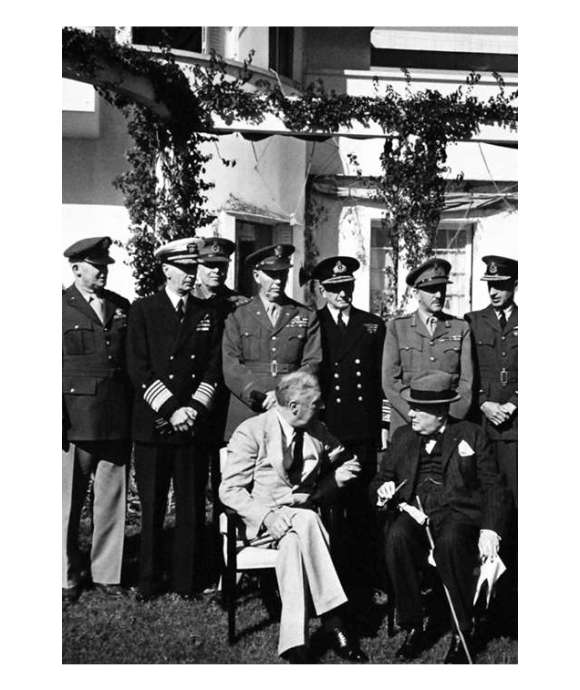
Folding Up the Combined Chiefs of Staff
When World War II ended, British and American leaders were unsure how to continue their nation’s grand alliance.
Collin Makamson
Collin Makamson is the former Assistant Director of Education for Curriculum at The National WWII Museum.
Cite this article:
MLA Citation:
APA Citation:
Chicago Style Citation:
